Debes estar logueado
-
moreX
-
Componentes
-
-
Category
-
Semiconductores
- Diodos
- Tiristores
-
Módulos con aislamiento eléctrico
- Módulos con aislamiento eléctrico | VISHAY (IR)
- Módulos con aislamiento eléctrico | INFINEON (EUPEC)
- Módulos con aislamiento eléctrico | Semikron
- Módulos con aislamiento eléctrico | POWEREX
- Módulos con aislamiento eléctrico | IXYS
- Módulos con aislamiento eléctrico | POSEICO
- Módulos con aislamiento eléctrico | ABB
- Módulos con aislamiento eléctrico | TECHSEM
- Go to the subcategory
- Rectificadores de puente
-
Transistores
- Transistores | GeneSiC
- Módulos SiC MOSFET | Mitsubishi
- Módulos SiC MOSFET | STARPOWER
- Módulos ABB SiC MOSFET
- Módulos IGBT | MITSUBISHI
- Módulos de transistores | MITSUBISHI
- Módulos MOSFET | MITSUBISHI
- Módulos de transistores | ABB
- Módulos IGBT | POWEREX
- Módulos IGBT | INFINEON (EUPEC)
- Elementos semiconductores de carburo de silicio (SiC)
- Go to the subcategory
- Controladores de puerta
- Bloques de energía
- Go to the subcategory
- Convertidores de corriente y tensión LEM
-
Componentes pasivos (condensadores, resistencias, fusibles, filtros)
- Resistencias
-
Fusibles
- Fusibles miniatura para circuitos electrónicos, serie ABC y AGC
- Fusibles tubulares de acción rápida
- Eslabones fusibles de retardo de tiempo con características GL / GG y AM
- Eslabones fusibles ultrarrápidos
- Fusibles de acción rápida (estándar británico y estadounidense)
- Fusibles de acción rápida (estándar europeo)
- Fusibles de tracción
- Eslabones fusibles de alto voltaje
- Go to the subcategory
-
Condensadores
- Condensadores de motor
- Condensadores electrolíticos
- Condensadores de película
- Condensadores de potencia
- Condensadores para circuitos de CC
- Condensadores de corrección del factor de potencia
- Condensadores de alto voltaje
- Condensadores de calentamiento por inducción
- Condensadores de almacenamiento de energía y pulsos
- Condensadores de ENLACE CC
- Condensadores para circuitos AC/DC
- Go to the subcategory
- Filtros EMI
- Supercondensadores
-
Protección contra sobretensiones
- Protección contra sobretensiones para aplicaciones coaxiales
- Protección contra sobretensiones para sistemas de videovigilancia
- Protección contra sobretensiones para cableado de potencia
- Pararrayos para LED
- Descargadores de sobretensiones para energía fotovoltaica
- Protección del sistema de pesaje
- Protección contra sobretensiones para Fieldbus
- Go to the subcategory
- Go to the subcategory
-
Relés y contactores
- Teoría de relés y contactores
- Relés semiconductores de CA trifásicos
- Relés semiconductores de CA trifásicos
- Reguladores, controles y accesorios
- Arranques suaves y contactores de inversión
- Relés electromecánicos
- Contactores
- Interruptores giratorios
-
Relés semiconductores de CA monofásicos
- Relés semiconductores CA monofásicos, serie 1 | D2425 | D2450
- Relés semiconductores CA monofásicos, series CWA y CWD
- Relés semiconductores CA monofásicos de las series CMRA y CMRD
- Relés semiconductores de CA monofásicos, serie PS
- Relés semiconductores de CA dobles y cuádruples, serie D24 D, TD24 Q, H12D48 D
- Relés de estado sólido monofásicos, serie gn
- Relés semiconductores de ca monofásicos, serie ckr
- Relés AC monofásicos SERIE ERDA Y ERAA para carril DIN
- Relés AC monofásicos para corriente 150A
- Relés dobles de estado sólido integrados con disipador de calor para carril DIN
- Go to the subcategory
- Relés semiconductores CA monofásicos para PCB
- Relés de interfaz
- Go to the subcategory
- Núcleos y otros componentes inductivos
- Radiadores, varistores, protecciones térmicas
- Aficionados
- Aire Acondicionado, Accesorios para Armarios Eléctricos, Neveras
-
Baterías, cargadores, fuentes de alimentación de búfer e inversores
- Baterías, cargadores - descripción teórica
- Baterías de iones de litio. Baterías personalizadas. Sistema de gestión de batería (BMS)
- Pilas
- Cargadores de baterías y accesorios
- Fuente de alimentación de respaldo de UPS y fuentes de alimentación de búfer
- Convertidores y accesorios para fotovoltaica
- Almacen de energia
- Celdas de combustible
- Baterías de iones de litio
- Go to the subcategory
-
Automaticas
- Futaba Drone Parts
- Finales de carrera, microinterruptores
- Sensores, transductores
- Pirometría
- Contadores, temporizadores, medidores de panel
- Dispositivos de protección industrial
- Señalización luminosa y sonora
- Cámara termográfica
- Pantallas LED
- Botones e interruptores
-
Grabadores
- Grabadora AL3000
- Grabadora KR2000
- Grabadora KR5000
- Medidor HN-CH con función de registro de humedad y temperatura
- Consumibles para registradores
- Grabadora 71VR1
- Grabadora KR 3000
- Grabadores de PC de la serie R1M
- Grabadores de PC de la serie R2M
- Grabador de PC, 12 entradas aisladas - RZMS-U9
- Grabador de PC, USB, 12 entradas aisladas - RZUS
- Go to the subcategory
- Go to the subcategory
-
Cables, alambres Litz, conductos, conexiones flexibles
- alambres
- cables Litz
-
Cables para aplicaciones especiales
- Los cables de extensión y compensación
- Cables para termopares
- Los cables de conexión a PT czyjnków
- Multicore cables temp. -60 ° C a + 1400 ° C
- cables de media tensión SILICOUL
- ignición alambres
- Los cables calefactores
- temp núcleo único. -60 ° C a + 450 ° C
- conductores de trenes
- El calentamiento de los cables en el Ex
- Go to the subcategory
- camisas
-
trenzas
- trenzas planas
- trenzas ronda
- trenza muy flexible - plana
- trenza muy flexible - Ronda
- Copper cilíndrico trenzado
- Copper protector de la trenza y cilíndrica
- cintas de conexión flexibles
- Trenzas cilíndrico galvanizado y acero inoxidable
- Aislamiento de PVC trenzas de cobre - Temperatura 85 ° C
- aluminio trenzado plano
- Kit de conexión - trenzas y tubos
- Go to the subcategory
- Accesorios para la tracción
- Terminales de cable
- barras flexibles aisladas
- carril flexible multicapa
- sistemas de gestión de cables
- Conductos, tuberías
- Go to the subcategory
- View all categories
-
Semiconductores
-
-
- Suppliers
-
Applications
- Accionamientos de CA y CC (inversores)
- Automatización HVAC
- Automatización industrial
- Automatización industrial
- Calentamiento por inducción
- Componentes para atmósferas potencialmente explosivas (EX)
- Dispositivos de protección industrial
- Energy bank
- Equipos para Armarios de Distribución, Control y Telecomunicaciones
- Fuentes de alimentación (UPS) y sistemas rectificadores
- Impresión
- Máquinas de soldar y máquinas de soldar
- Máquinas herramientas CNC
- Máquinas para secar y procesar madera
- Máquinas para termoformado de plásticos
- Medición y regulación de temperatura
- Medición y regulación de temperatura
- Minería, metalurgia y fundación
- Motores y transformadores
- Tracción de tranvía y ferrocarril
-
Instalación
-
-
Inductores
-
-
Dispositivos de inducción
-
-
https://www.dacpol.eu/pl/naprawy-i-modernizacje
-
-
Servicio
-
- Contact
- Zobacz wszystkie kategorie
Gestión del calor - Desafíos para los vehículos eléctricos

Thermal Management- Challenges for electric vehicles
The change to electric powertrains and the increasing importance of autonomous driving imply a variety of new challenges. Thermal management or rather thermal connectivity and cooling of electrical components have an important role to play. While there is a large number of Thermal Interface Materials, the most common solution for the automotive sector are the Gap Filler Liquids (GFL) and the Softtherm Pads, both of them can be individual customized.
According to the latest calculations by the Federal Ministry of Environment, Germany will significantly miss the self-imposed climate target of reducing CO2 emissions by more than 40% until 2020. In contrast to the trend of other sectors, greenhouse gas emissions from the transport sector even recorded a slight increase compared to the reference year 1990 and are responsible for one fifth of Germany's total emissions. Improved vehicle efficiency could not compensate conflictual factors such as increasing traffic and engine performance. The Federal Government's new climate protection plan envisages a 40-42% reduction in greenhouse gas for the transport sector by 2030, just a small component to meet the 2 ° C target of the Paris climate agreement. Alternative drive systems are essential in order to meet the target of 95 g CO2/km on average for cars. If these values are exceeded, car manufacturers face massive fines. This pricing mechanism has a positive impact on low-emission cars. A global rethink has to take place in the automotive industry.
Thermal Interface Materials
According to forecasts by leading German automobile manufacturers, all top sellers will also be available as an electric car by 2030 at the latest, an extremely ambitious goal. Aspects like an continuous increasing power density or higher heat flow per area (W/m2) and "high power charging" lead to an increased component temperature and consequently to a reduced lifetime in the application.Efficient thermal cooling of electrical components by connecting of the heat source to heat sink, while at the same time having an electrically insulating effect, is therefore a prerequisite for the high quality standards from the automotive sector. This connection and the levelling of appropriate component tolerances, gaps or air inclusions can be realized individually by the wide range of Thermal Interface Materials of KERAFOL, depending on the requirements for thermal conductivity (W/mK) and desired temperature difference ∆T.
Check out our offer of thermal materials
Thermal Management for e-mobility
The change to electric drive systems as well as the increasing importance of autonomous driving imply completely new applications and challenges in the field of "Thermal Management." The functional relationship between the operating temperature of a battery stack and its maximum achievable number of cycles has been sufficiently proven, which can be quantified extremely precisely by the following rule of thumb:
"A reduction in operating temperature by 10°C doubles the lifetime of the battery cells"
The net reach of an electric car is also noticeably dependent on the operating temperature of the battery and thus also indirectly on the present thermal cooling. In addition to the concept for thermal connectivity of the energy source, the "car of tomorrow" also requires solutions for electrical components in the areas of LED, sensor technology, on-board network and inverter, one of the core elements of the electric powertrain.

Thermal Management for electric cars
Gap Filler Liquids
For high volumes in particular, two-component GFL are an efficient and cost-oriented solution. For this purpose, the two components of the ceramic filled silicone elastomers are blended by a mixing tube and can be directly applied to the component (e.g. metal housing) by a dispensing system. In the next step, the electronic components (e.g. IGBTs, capacitors, etc.) are attached under slight pressure to the still uncured mass, thus creating an even distribution of the mass and consequently a defined thickness as well as reproducible electrical and thermal parameters. The cross-linking or curing of the mass takes place under room temperature and lasts about an hour, but can be customized at the customer's request. Primarily the GFL with lower thermal conductivity has a high self-adhesion, which can be very useful for the assembly. Nevertheless, in case of a disassembly the GFL of KERAFOL can be removed again, a property that is not always customary in the market.
Compared to systems based on polyurethane or epoxy, silicon-containing GFL can absorb and compensate vibrations much better, an effect that is favoured by the high softness of the GFL. In addition, the low viscosity of the GFL allows for a simple workability and has a gentle effect on the dispensing system, a thesis that has been confirmed by leading plant manufacturers such as ViscoTec, bdtronic or Scheugenpflug.
Check out our GFL series products
„The GFL of KERAFOL is worldwide used for cooling of inverters, batteries and many other electric components”
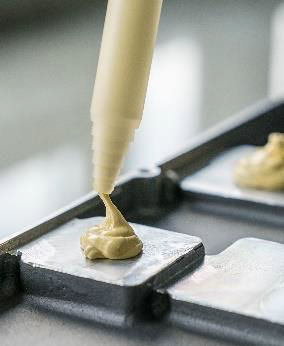
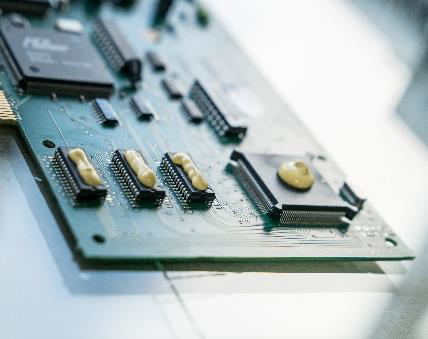
| Gap Filler Liquid | |||||
|---|---|---|---|---|---|
| Basic Material | Thermal Conductivity (W/mK) |
Breakdown Voltage (kV/mm) |
Viscosity (Pas) |
Application Temperature (°C) |
Hardness (Shore 00) |
| Silicone | 1,8 - 4,5 | 12 -20 | 45 - 90 | -40 up to +200 | 45 - 70 |
Compared to systems based on polyurethane or epoxy, silicon-containing GFL can absorb and compensate vibrations much better, an effect that is favoured by the high softness of the GFL. In addition, the low viscosity of the GFL allows for a simple workability and has a gentle effect on the dispensing system, a thesis that has been confirmed by leading plant manufacturers such as ViscoTec, bdtronic or Scheugenpflug.
Softtherm Pads
For many thermal connections in the field of e-mobility, classic thermal conducting tapes and pads are still "state of the art." Especially cross-linked silicone-based elastomers, better known as Softtherm Gap Pads, can play a crucial role in thermal cooling (power range up to 6 W/mK) of electronic components due to their variety of specifically adjustable properties.
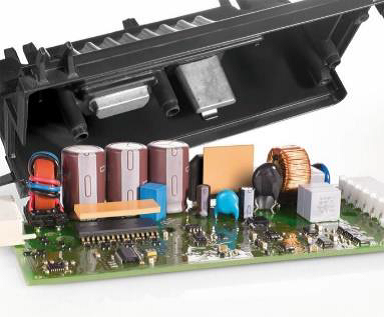
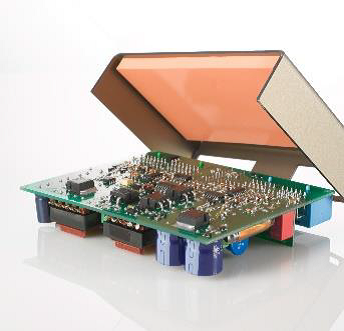
| Softtherm Pads | |||||
|---|---|---|---|---|---|
| Basic Material | Thermal Conductivity (W/mK) |
Breakdown Voltage (kV/mm) |
Compression (%) |
Application Temperature (°C) |
Hardness (Shore 00) |
| Silicone | 1,0 - 6,0 | 2 - 16 | up to 40 | -60 up to +250 | 10 - 75 |
Check out our offer of filling materials - Softtherm
Due to the high flexibility and enormous mechanical resistance of the Softtherm Pads, large gap dimensions as well as high component tolerances can be compensated. In addition to individual solutions, such as one-sided adhesive coating for component fixation or fibreglass reinforcement to increase mechanical stability, two-layer films (required by specific regulations) can also be of great added value to the customer. KERAFOL is meeting these customer-specific requirements for many years and finds the right solution for every application. Regardless of which of the "Thermal Interface Materials" is the best solution from a technical and monetary point of view,
KERAFOL together with DACPOL has been meeting these specific customer requirements for many years and finds the right solution for each application. Regardless of which of the "thermally conductive materials" is the best solution from a technical and financial point of view.
Productos relacionados
Publicaciones relacionadas
 Thermally conductive materials in power storages
Thermally conductive materials in power storages
 Measuring power and energy in electric circuits
Measuring power and energy in electric circuits
 Industrial communication in explosion hazardous areas (with MTL components)
Industrial communication in explosion hazardous areas (with MTL components)




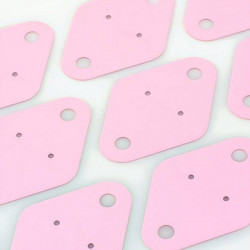
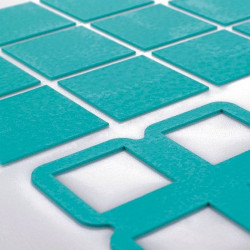
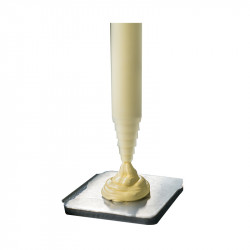
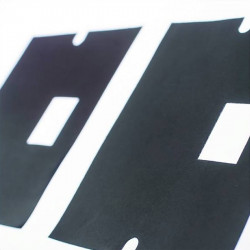
Deja un comentario